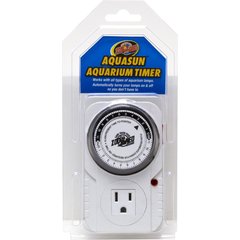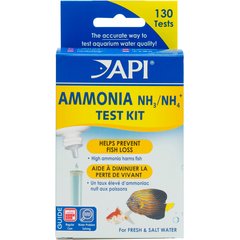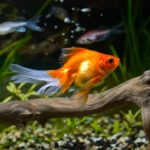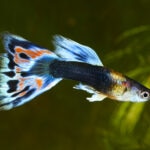Why Is My Fish Tank Cloudy?
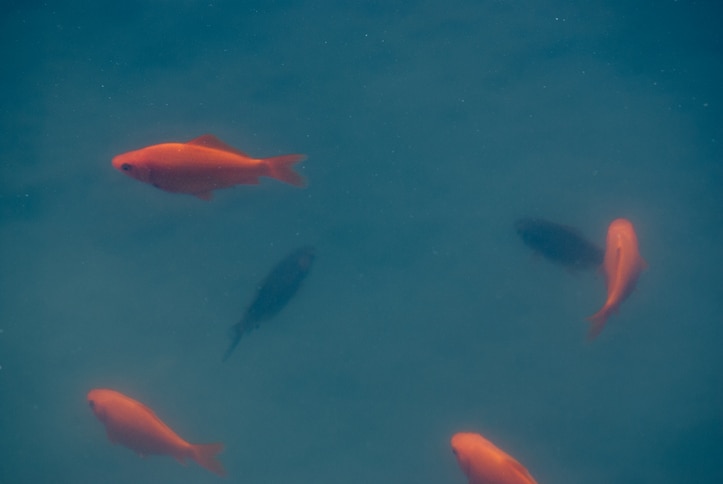
Photo by jodiealaine/iStock / Getty Images Plus via Getty Images
Cloudy water is a common—and frustrating!—problem for aquarium owners. While cloudy water isn’t necessarily harmful, it’s a sign that something is off-balance with your aquarium.
If you’re wondering, “why is my fish tank cloudy?” you’ll likely want to fix it quickly. After all, we always want to clearly see our fish friends swimming around.
What Causes Cloudy Aquarium Water?
Cloudy aquarium water can be caused by multiple factors. The following are common culprits:
New Tank
Common in new tanks, bacterial blooms appear white and cloudy and reproduce rapidly.
However, “bacterial blooms are generally not as scary as they sound,” says Carey Manzolillo, co-owner of Aquarium Services Professionals in Reading, Pennsylvania.
“These blooms indicate a rapid increase in bacteria, which is an essential component of a healthy aquarium system,” Manzolillo explains. “You should expect a new aquarium to experience a healthy bacterial bloom during the cycling process.”
When setting up a new tank, watch out for new tank syndrome in your fish. This condition is caused by a lack of biological filtration, and it can take four to six weeks to build your fish tank’s biological bacteria to a level where they can handle your fish’s waste. During this time, it is not uncommon to see cloudy water.
Signs of new tank syndrome in fish include:
- Lethargy
- Decreased appetite
- Increased slime coat/cloudy appearance
- Death
- Cloudy and foul-smelling tank water
Improper Cleaning
Another cause of white, cloudy water is cleaning your tank too often or constantly replacing your filter media, which disrupts the natural balance of beneficial bacteria.
“Most bacteria live in the gravel or on surfaces, such as glass, rocks, decor, plants, and in your filter,” explains Kason Farnella, owner of New Jersey Aquarium Service Professionals. “By overcleaning the tank, you can remove too much beneficial bacteria, resulting in the bacteria trying to compensate.”
Your tank cleaning maintenance schedule should depend on the size of your fish tank, the total number of pet fish, and your filtration setup.
Excess Light
If your tank receives too much light, it can result in an “algae bloom” with green, cloudy water.
“This can be caused by too much direct sunlight, lights running more than eight to 12 hours a day, using non-aquarium lights, or using planted aquarium lights in tanks without plants,” explains Farnella. This can also be caused by too much nitrate or phosphate in the water.
Overfeeding Your Fish
If you’ve given your fish too much food, they will eventually get too full and stop eating. Uneaten fish food can break down in the water, leading to excess ammonia and greenish, cloudy water.
“Although it’s often overlooked, we find that overfeeding is very often at the root of an aquarist’s issues,” says Manzolillo.
Waste Buildup
If your tank has too many fish or isn’t cleaned frequently enough, excess waste can cause a buildup in phosphates and/or nitrate, resulting in cloudy, green water from secondary algae growth, says Manzolillo.
Dusty Substrate
Unwashed gravel can be dusty and lead to temporarily cloudy water, says Manzolillo. This can be avoided by rinsing your gravel prior to adding it to your tank.
Medications
If your fish have been prescribed any medications, they could cause a bacteria imbalance that results in cloudy water.
“Some medications, particularly antibiotics, can kill a lot of your beneficial bacteria,” says Farnella. Water-based antibiotics are not recommended and are typically unlicensed, over-the-counter products that can be harmful to your fish. To avoid this, your veterinarian can inject your fish or provide oral medication.
Will Cloudy Aquarium Water Hurt My Fish?
Murky aquarium water does not usually harm fish. However, the underlying cause should be addressed to ensure that your aquarium is healthy, balanced, and free of ammonia, a chemical compound caused by fish metabolism, excess food, and waste.
“Cloudy water is an indication that something is going on,” says Manzolillo. “So, although bacterial and algae blooms are usually not harmful, it’s important to check for the presence of ammonia.”
Ammonia is toxic and can cause the following symptoms in fish:
- Lethargy
- Sitting at the bottom of the tank
- Discolored gills
- Red streaks on the fins or body
- Lack of eating or interest in food
- Gasping near the surface
My Fish Tank’s Cloudy. What Do I Do?
If the quality of water in your fish tank is concerning, never hesitate to reach out to an aquarium maintenance professional—especially if you don’t feel comfortable dealing with it yourself, says Farnella.
However, if you’d like to try troubleshooting the cloudy water, consider the following tips from Manzolillo:
- Check your ammonia levels. “Be sure to have an ammonia test kit on hand,” says Manzolillo. “Whenever something seems off, your first tasks should be to check your temperature and make sure your ammonia level is zero.”
- Check your tank’s temperature. If your tank is too warm, it could be causing an overgrowth of bacteria—so adjust the temperature to the proper setting. Keep in mind that the ideal water temperature varies depending on what type of fish you have!
- Gradually change the water. Never change 100% of your aquarium’s water or attempt to “deep clean” the tank and accessories. “Don’t overclean,” says Manzolillo. “Instead, perform regular 10–50% water changes, making sure that your new water is free from chlorine, nitrate, ammonia, and phosphate, and is the correct temperature.”
- Move the tank away from direct sunlight. If your tank has green cloudy water indicating an algae bloom, remove it from direct sunlight and ensure your aquarium is receiving the proper amount of light for your specific fish and habitat. A UV sterilizer can also help limit algae bloom, advises Manzolillo.
- Watch and wait. Don’t rush to make any drastic changes. After addressing the cause of your cloudy water, give your tank’s bacteria time to rebalance. “If you’re experiencing a bacterial bloom and your test kit shows no ammonia is present, do nothing,” advises Manzolillo.
If you’re concerned about the health of your fish, contact your veterinarian immediately. “If you think your fish are sick, don’t wait to ask for help,” says Manzolillo. “Some very treatable diseases spread very quickly.”
Recommended Products
How To Prevent Cloudy Fish Tank Water
To prevent cloudy tank water, consider the following tips:
- Set the correct temperature. Research your fish to determine the correct temperature for your tank.
- Rinse new gravel. Gravel can contain dust and other water-clouding debris.
- Stop overfeeding. Only feed the exact amount of food recommended for your species. Remind all family members and guests of the feeding schedule and portion size.
- Limit light. Too much light can cause an algae bloom.
- Don’t overclean. Cleaning your tank and filter too frequently can actually encourage bacterial overgrowth.
FAQs About Cloudy Aquarium Water
Why is my fish tank cloudy after one day?
If your fish tank is cloudy one day after cleaning, it could be bacterial bloom. Overcleaning can cause bacteria to overgrow as they attempt to restore balance; regular cleanings with partial water changes are preferable to “deep cleans.”
What is the fastest way to clear cloudy aquarium water?
To clear cloudy aquarium water, you can do a partial water change, replacing 10–50% of your tank’s water. If your tank has algae bloom, a UV sterilizer and fine floss filter to catch the dead algae particles can also be helpful.
Why is the water cloudy in a new fish tank?
If your new fish tank is cloudy, it’s likely due to bacterial bloom, also known as “new tank syndrome.” When bacteria colonize a new tank, they rapidly reproduce, causing cloudy water.
This content was medically reviewed by Jessie Sanders, DVM, DABVP (Fish Practice).

